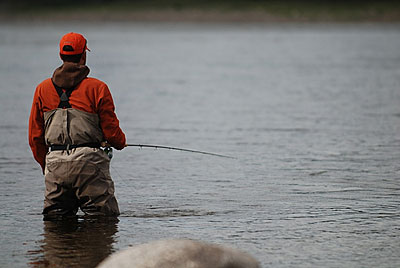About the New Felt Bans
Have a question you want answered? Email it to us at [email protected].
Question: I’ve read that Maryland and Vermont are “banning” felt soles this year, but I haven’t heard anything about what that actually means, in terms of where they’re banned and what the penalties are.
Tom C. Glens, Falls, NY
Answer: Now that you mention it, there has been very little press about the mechanics of either ban. Maryland’s ban, which went into effect on March 22, was the first in the nation, and Vermont will follow suit on April 1. Opening day of the Vermont fishing season is the 9th.
In terms of where you can and can’t wear felt, that’s an easy one. The Vermont rule couldn’t be any clearer:
It is unlawful to use external felt-soled boots or external felt-soled waders in the waters of Vermont, except that a state or federal employee or emergency personnel, including fire, law enforcement, and EMT personnel, may use external felt-soled boots or external felt-soled waders in the discharge of official duties. (Added 2009, No. 130 (Adj. Sess.), § 1, eff. April 1, 2011.)
In Maryland, which has many coastal waters, some anglers have wondered if felt is okay in tidal waters. The answer is NO. Although didymo is not a problem in salt water, the state agency felt that enforcement would be much more difficult if felt were okay in some waters but not in others, so they opted for a zero-tolerance policy. The Maryland ban goes a step (or two) further than the one in Vermont, in that the Old Line State has banned felt soles “within 5 feet of state waters.”
As far as fines for getting caught with felt go, Maryland is treading lightly, aware that issuing a bunch of tickets right off the bat could anger the fishing community. Here’s the explanation on the Maryland DNR Web site:
The Department will be using 2011 as an education year. The Department used public meetings and events, press releases, and news articles to get the word out beginning in March 2010. This education process will continue through this year. Natural Resource Police will be issuing warnings to violators and distributing information cards. The fine and penalties for wearing banned waders will be determined in consultation with the Sport and Tidal Fisheries Advisory Commissions’ Penalty Workgroup this summer and will be effective for 2012. Maximum penalties for all fisheries related violations are $1000 for a first offense and $2000 for a second offense.
In Vermont, Fish & Wildlife enforcement officers won’t be so understanding. The first offense will cost you 5 points on your fishing license (that’s halfway to a 1-year suspension) and a $133 fine. You can buy a pair of studded rubber-sole boots for less than that, so it doesn’t make much sense to flout the new law.
In both states, fisheries departments are stressing that just because you aren’t wearing felt doesn’t mean you shouldn’t inspect, clean, and dry your gear between fishing trips. Banning felt is just one step in the process of stopping the spread of aquatic nuisance species.
My friend Matt Crawford at Pale Morning Media tells me that, to help sportsmen prepare for the new ban, the Vermont Fish & Wildlife Department is compiling a list of places where anglers and hunters can purchase the needed footwear to comply with the new law.
Vermont-based cobblers that are re-soling wading boots with non-felt bottoms, local retailers of wading boots or waders and all manufacturers of rubber-soled wading boots should send the following information:
- Business name
- Business address
- Type of business (retailer, manufacturer, cobbler)
- Phone number
- Website (if available)
Send via email to: [email protected]. The information will be posted on the Vermont Fish & Wildlife Website (www.vtfishandwildlife.com).
“We know anglers want to comply with the law the Legislature passed, and we know anglers want to take every step needed to protect our waterways,” said Vermont Fish & Wildlife Commissioner Patrick Berry. “With fishing season starting April 9, we need to let anglers know where they can get the necessary equipment or retrofit their existing gear.”












